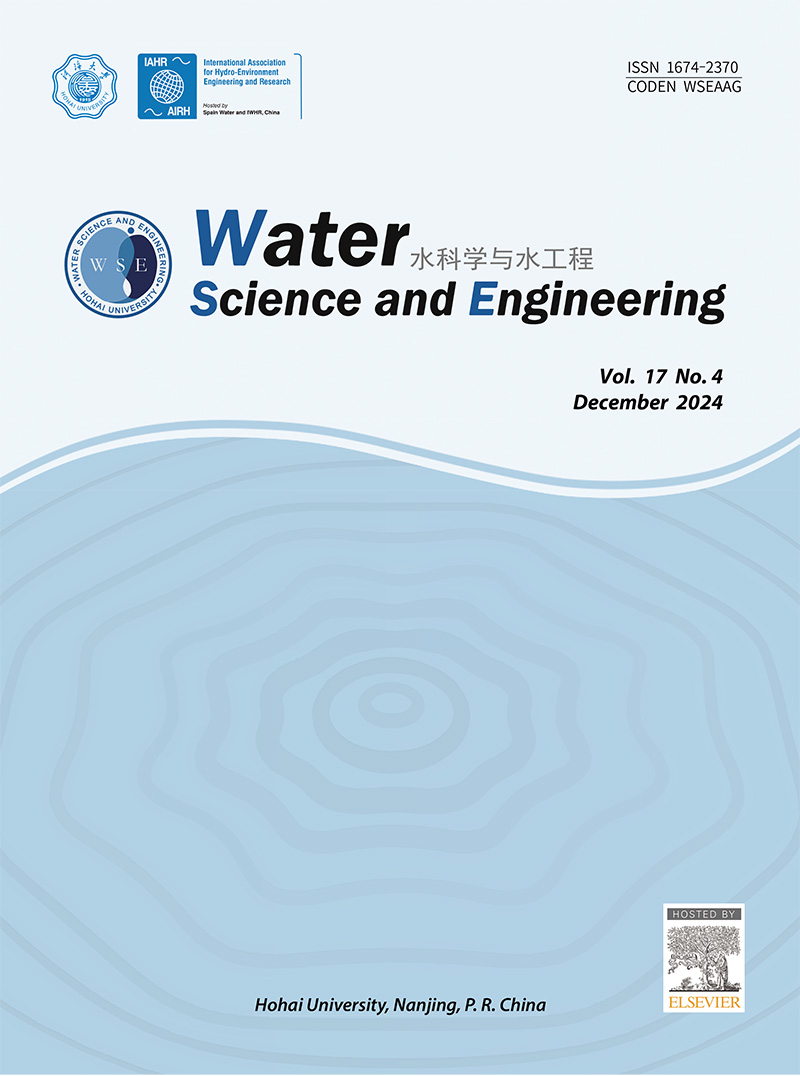Impacts of bed roughness and orientation on hydraulic jump: A review
IF 4.3
Q1 WATER RESOURCES
引用次数: 0
Abstract
Hydraulic jumps are a prevalent phenomenon in flows through spillways, chutes, and sluice gates. As hydraulic jumps exhibit substantial kinetic energy, the downstream of a hydraulic structure is prone to scour. To mitigate downstream scour and enhance energy dissipation, hydraulic jumps are often directed into stilling basins with various bed configurations, including horizontal, sloping, rough, and their combinations. This review compiles numerous analytical and experimental studies on hydraulic jumps under various bed conditions. The effect of bed roughness on sequent depth ratio, roller and jump lengths, shear stress, and energy dissipation is critically reviewed. The impacts of roughness height, flow Froude number, and bed angle on jump characteristics are discussed, substantiated by comparative analyses for distinct roughness heights. The results indicate that bed roughness intensifies shear stress, resulting in augmented energy dissipation and reductions in jump length and sequent depth. Additionally, the analytical and empirical equations proposed by researchers for different jump scenarios are discussed, and their applicability under various conditions is summarized. Finally, it suggests considering the scale effect in future research to refine the comprehension of jump stability over adverse slopes.
床面粗糙度和走向对水力跃迁的影响:综述
在通过溢洪道、溜槽和闸门的水流中,水力跳变是一种普遍现象。由于水力跳跃具有巨大的动能,水工结构的下游容易发生冲刷。为了减轻下游冲刷和增强能量耗散,水力跳跃通常被引导到具有不同河床配置的消力池,包括水平、倾斜、粗糙及其组合。这篇综述汇编了许多在不同河床条件下的水力跳跃的分析和实验研究。对床层粗糙度对连续深度比、滚轮和跳轮长度、剪应力和能量耗散的影响进行了评述。讨论了粗糙度高度、流动弗劳德数和床层角度对跳变特性的影响,并通过不同粗糙度高度的对比分析加以证实。结果表明,床层粗糙度加剧了剪切应力,增加了能量耗散,减小了跳长和跳深。此外,还讨论了研究者针对不同跳跃情景提出的分析方程和经验方程,并总结了它们在不同条件下的适用性。最后,建议在未来的研究中考虑尺度效应,以完善对逆坡跳跃稳定性的理解。
本文章由计算机程序翻译,如有差异,请以英文原文为准。
求助全文
约1分钟内获得全文
求助全文
来源期刊

Water science and engineering
WATER RESOURCES-
CiteScore
6.60
自引率
5.00%
发文量
573
审稿时长
50 weeks
期刊介绍:
Water Science and Engineering journal is an international, peer-reviewed research publication covering new concepts, theories, methods, and techniques related to water issues. The journal aims to publish research that helps advance the theoretical and practical understanding of water resources, aquatic environment, aquatic ecology, and water engineering, with emphases placed on the innovation and applicability of science and technology in large-scale hydropower project construction, large river and lake regulation, inter-basin water transfer, hydroelectric energy development, ecological restoration, the development of new materials, and sustainable utilization of water resources.
 求助内容:
求助内容: 应助结果提醒方式:
应助结果提醒方式:


